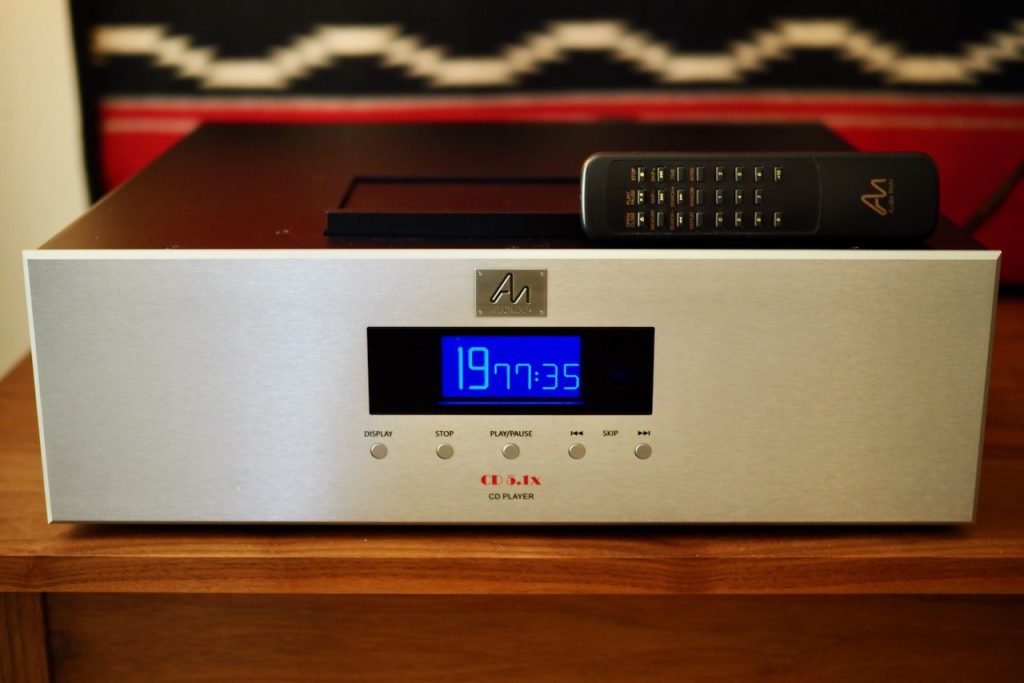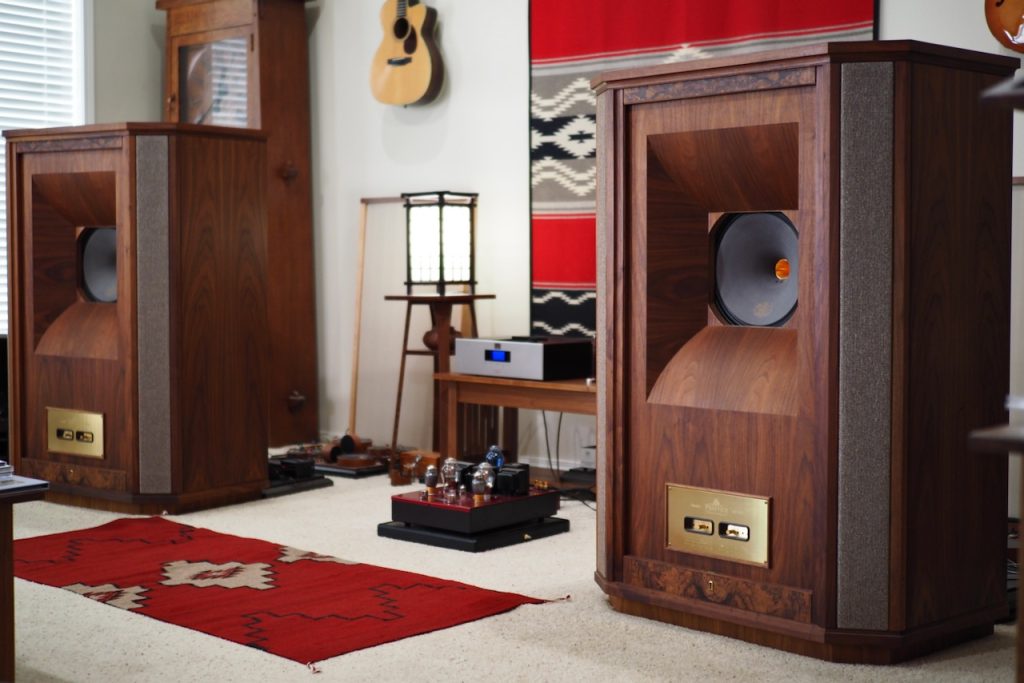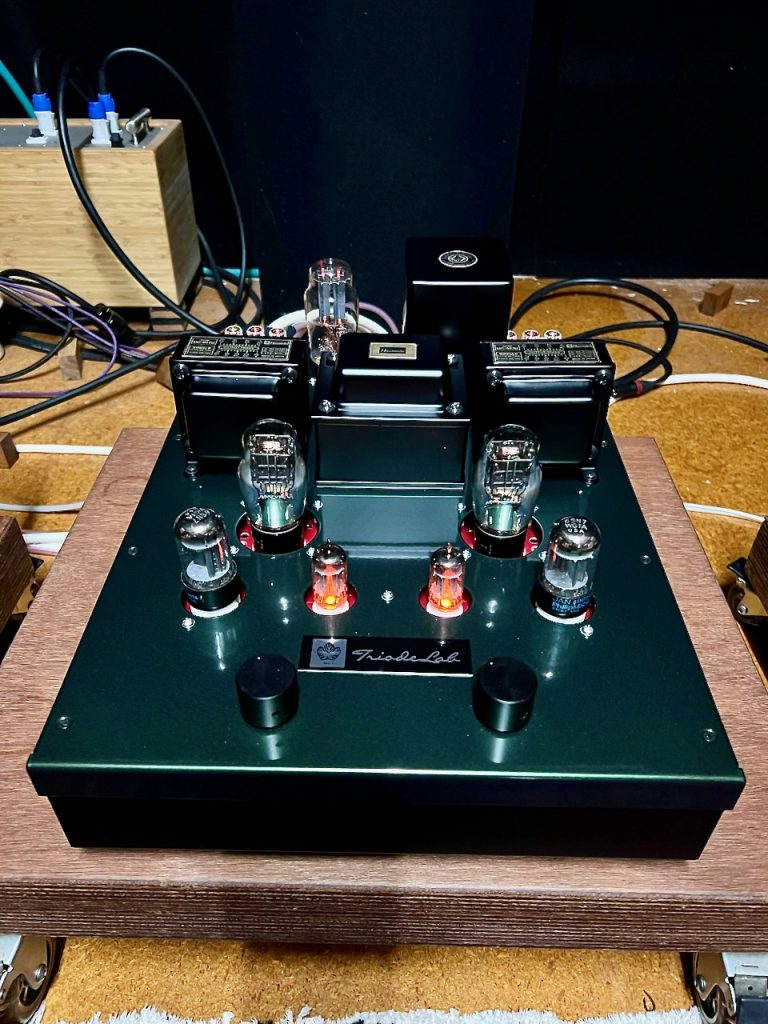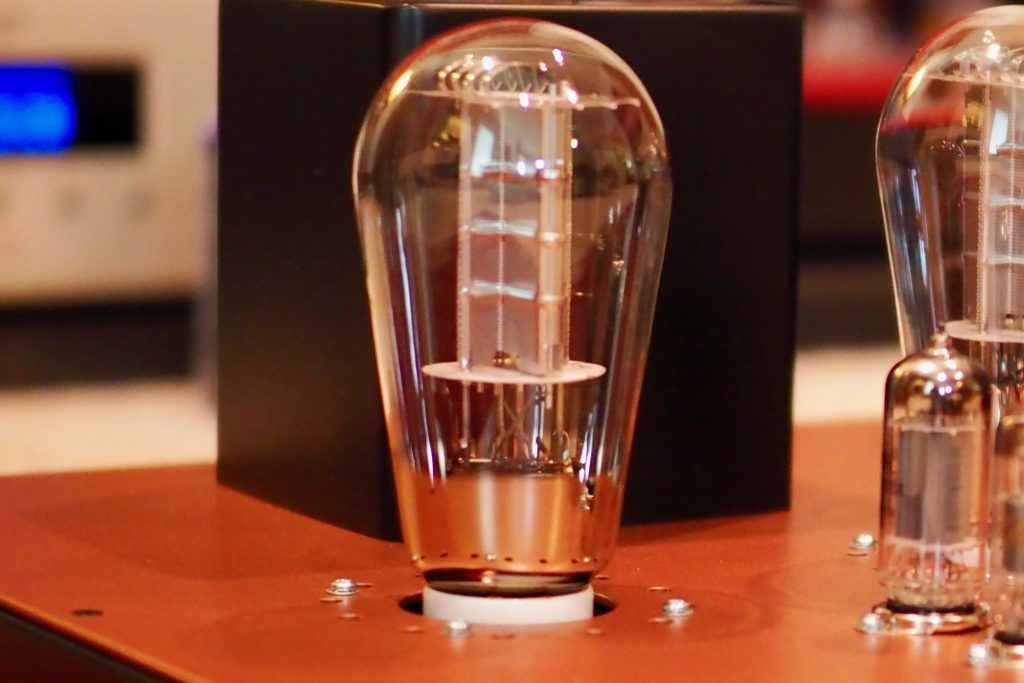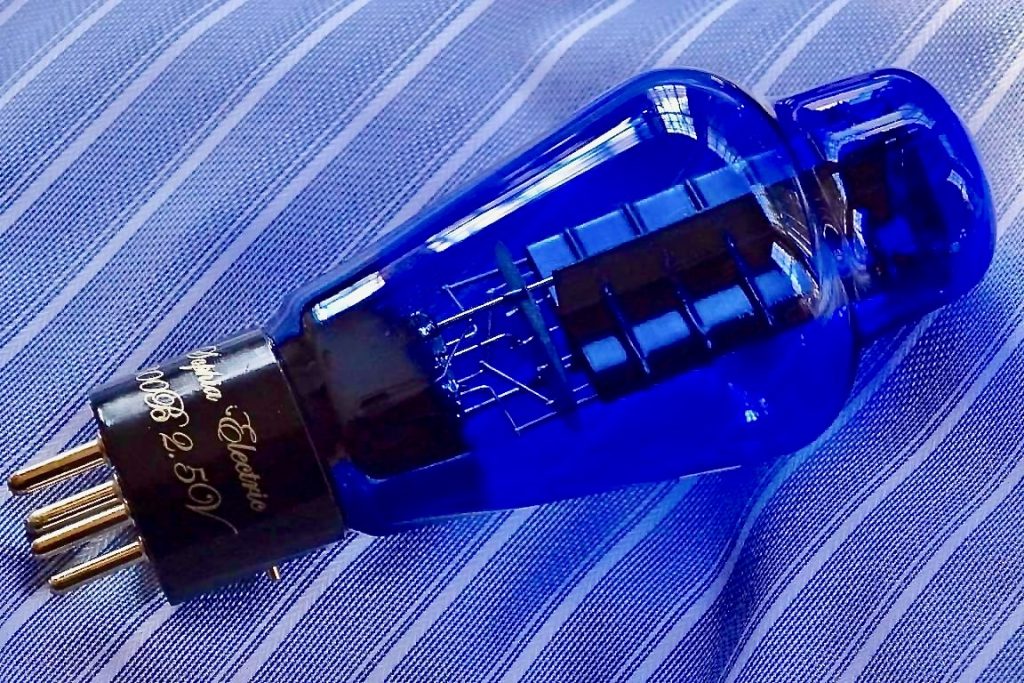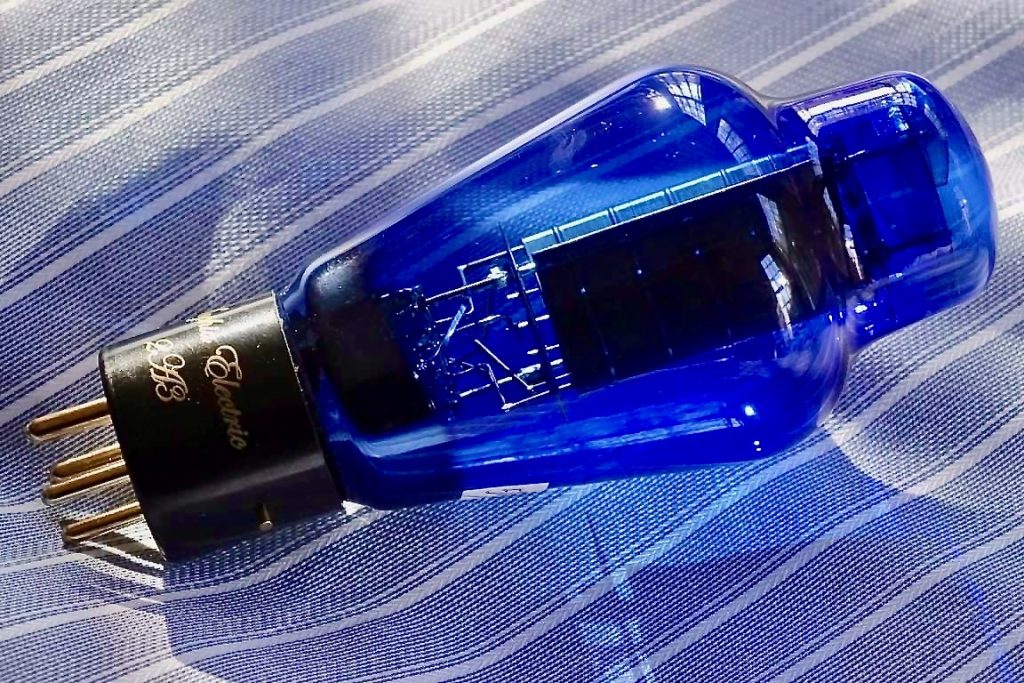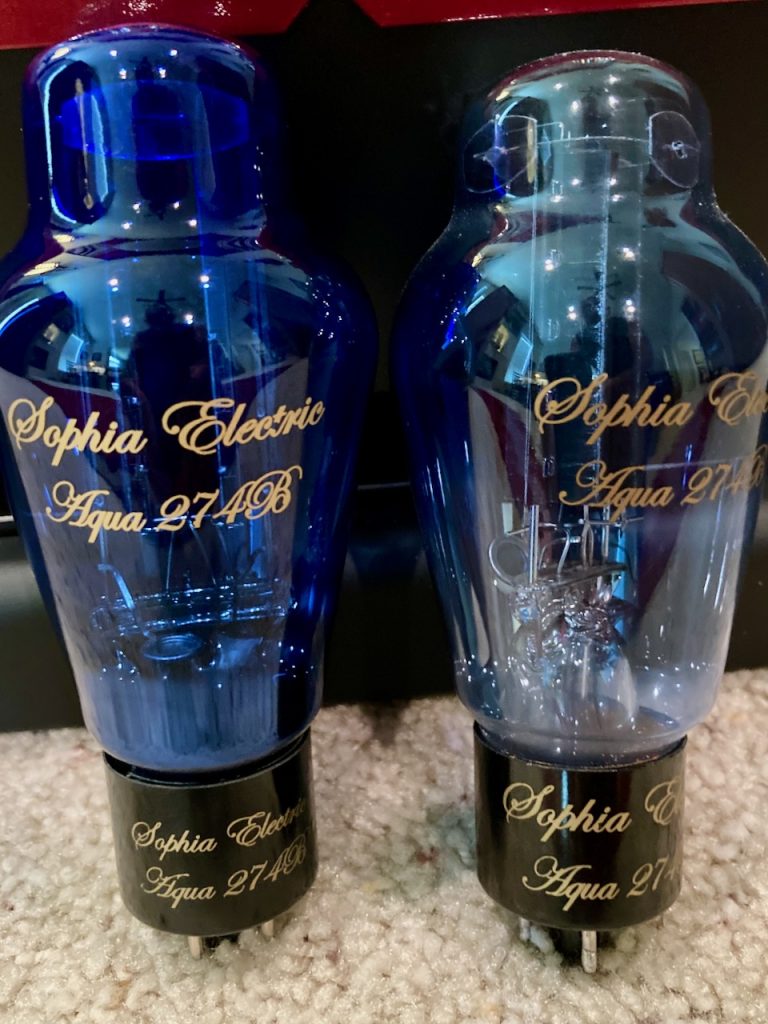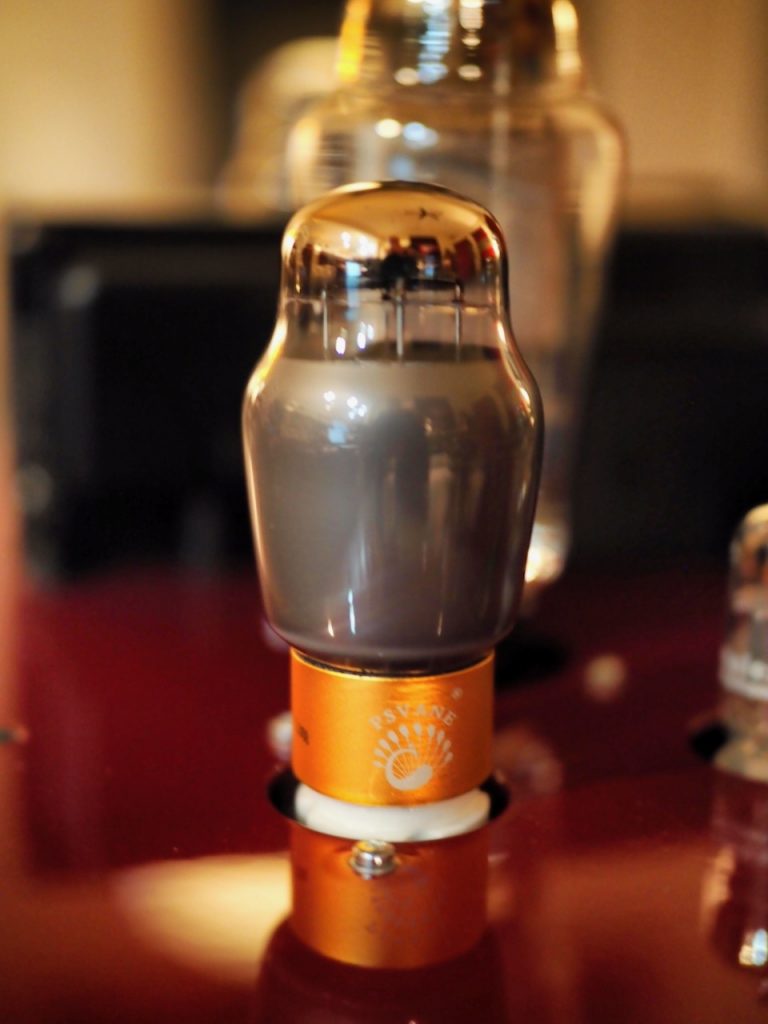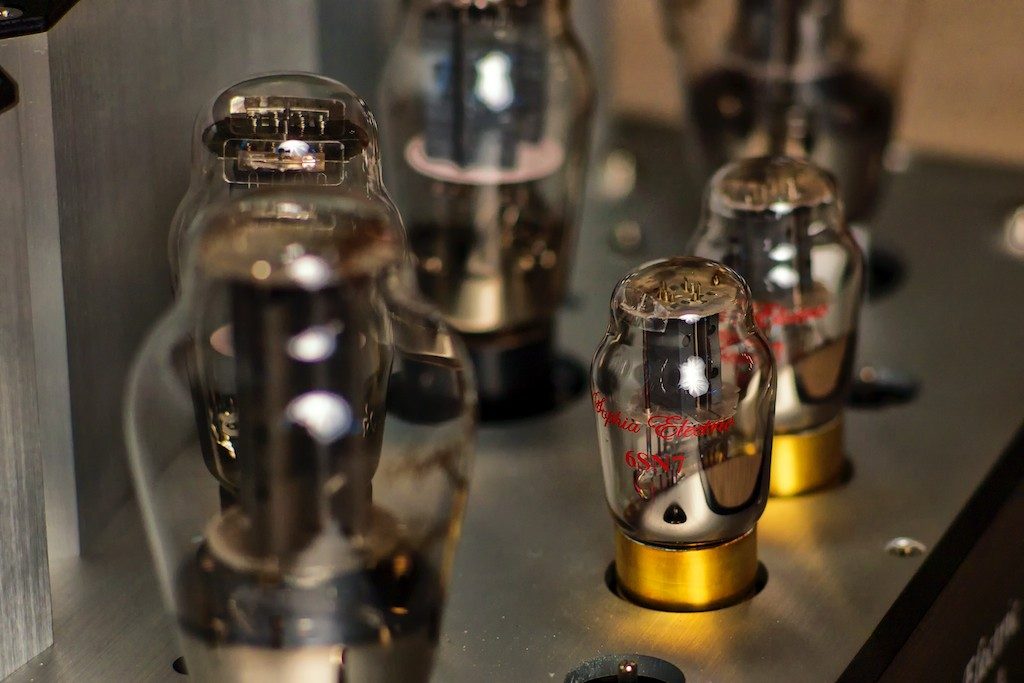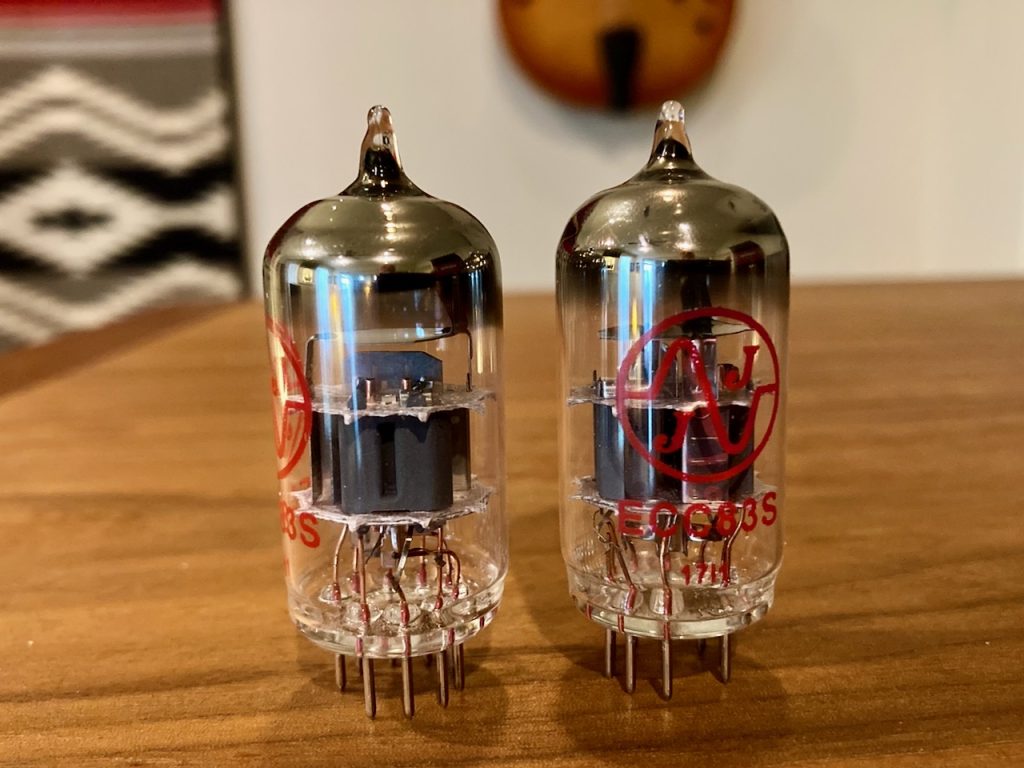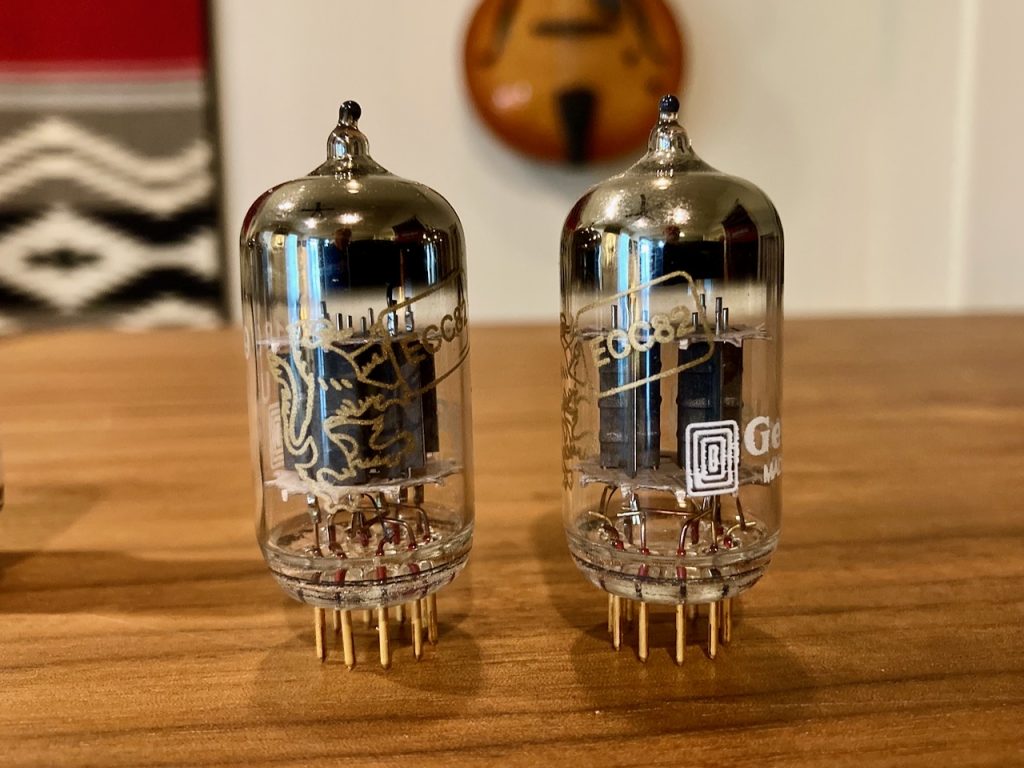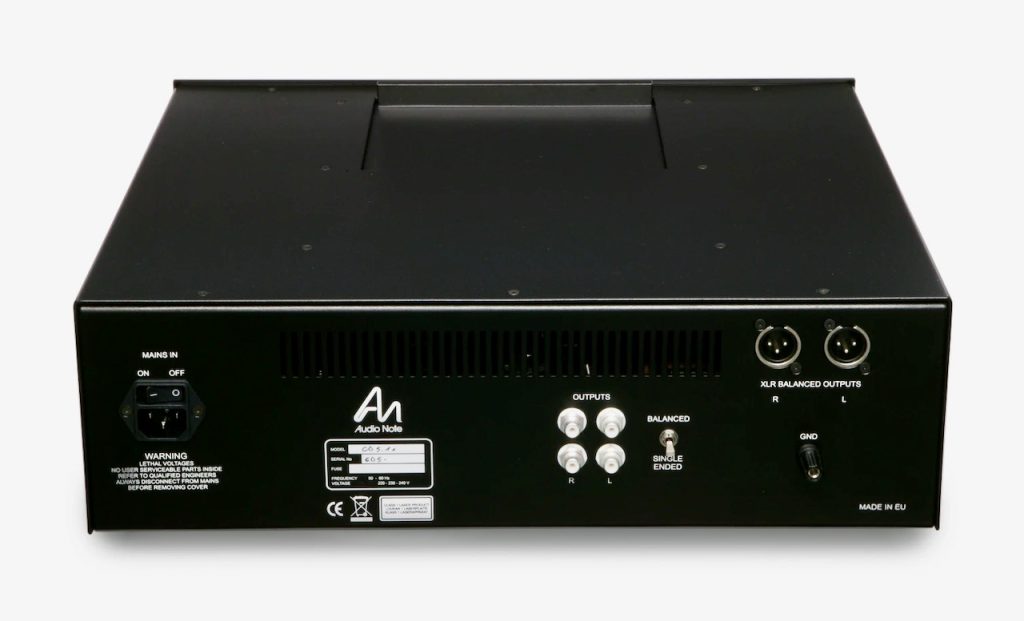Greetings friends, and Happy Holidays to you! I hope you are all doing great this Holiday Season. 🙂
Here in the Pacific Northwest of the USA we've been inundated with rain from the atmospheric river that is dumping on us, with record levels of rain - estimated at 10 trillion gallons over the last week - along areas of the Oregon-Washington coast.
If there's even a short break in the rain I'm out on my bicycle and motorcycle for a bit of 2-wheel action, but the rest of the time its the indoor adventures that are adding a little spice to my Winter audio and musical life.
The Holiday Season also means it's time for the Annual Positive Feedback Writer's Choice Awards. You can see all the Writers' Choice Awards for 2023 HERE.
Here's an excerpt about my 3 choices for 2023 (with an update that's not in the Positive Feedback article):
The Writers' Choice Awards are always a special time of year in that I'm able to reflect back on the year and tell you about the crème de la crème audio components that I've had the pleasure of writing about for you here at Positive Feedback.
I absolutely adored the performance of the Mactone XX-440 line preamplifier and 65-watts per channel MH-120 stereo amplifier combination with my Tannoy Westminster Royal SE loudspeakers during their visit.
Mactone's hand-crafted, point-to-point wired, premium vacuum tube amplification designs are sure to impress, as they possess a beautifully natural tonality, dynamic prowess, and a liquid and refined presentation, that represents vacuum tube amplification at its finest.
Mactone XX-440 Line Preamplifier. $11,500
Mactone MH-120 Stereo Amplifier. $13,500
I suspect that 'love' at first listen will be a common response for many auditioning the Mactone XX-440 line preamplifier and MH-120 stereo amplifier combination—it certainly was mine—and I encourage you to stop by In Living Stereo to hear them for yourself.
Read more HERE.
Audio Note (UK) CD 5.1x Red Book CD Player. $30,850
More than any audio component that's ever visited my listening room, I've lusted after the Audio Note (UK) CD 5.1x CD player. I am absolutely awed by its level of performance, and thrilled by the intensity of listening satisfaction it is capable of delivering from CDs.
The top-of-the-line Audio Note CD 5.1x Red Book CD player deeply impressed me in terms of its sound quality, musicality, and its extraordinary build quality. The CD 5.1x rewrites what kind of performance I thought was possible from CD players and the Red Book CD format.
The Audio Note (UK) CD 5.1x Red Book CD player has challenged my perceptions of what a digital audio reality sounds like. The CD 5.1x's refined analog-like presentation, superb musicality, and exemplary sound quality from CDs puts it in a performance category that can match or exceed the performance of even a top-notch turntable playing LPs. Truly extraordinary!
Read more HERE.
Sophia Electric Aqua II 274B Rectifier. $250
The release of this new premium Sophia Electric Aqua II 274B was originally planned to coincide with Sophia Electric's 20 Year Anniversary in 2021, but production was delayed due to the Covid-19 pandemic.
The new Aqua II 274B is impressive: a beautifully natural tonal balance, a huge sense of recorded acoustic, gorgeous tone color, a vivid sense of imaging presence, excellent dynamics, and increased clarity and resolution of nuance.
I was still writing the feature review of the new Sophia Electric Aqua II 274B rectifier when our Writers' Choice picks were due to Dave & David, but now the full feature review has been published.
Here's a couple excerpts:
"I've listened to a ton of CDs and LPs with the new Aqua II 274B rectifier in the Triode Lab 45 EVO, and it has all of the natural sounding tonal properties, vibrant musicality, excellent dynamics, and spectacular sound-staging abilities that make the original Aqua 274B so desirable, and yet the Aqua II 274B manages to take everything up another notch in performance."
"The 'superpower' ability of the Aqua II is that its additional resolution and more vivid imaging meant that I could still hear everything in the music even at lower volumes, a trait that comes in handy with low-powered SET amplifiers. I didn't get a sense I was missing anything in the music even at lower SPL levels, the music was just projected with more authority to me as a listener."
Read more HERE.
Vacuum tubes are hot!
I don't mean just thermally (even though that's true), I mean that in the slang sense of vacuum tubes adding some visceral audio sex appeal by "hotting up" the playback of music in a home hi-fi system.
There are some exquisite solid-state audio components out there these days, which I enjoy as well, but vacuum tube components still add that special something extra to the playback of music ... and ... they allow for lots of vacuum tube rolling fun & games to keep one entertained during those listening sessions on cold Winter evenings.
I think of rolling vacuum tubes as being like wine tasting, with each vacuum tube having its own 'flavor' and character.
Just as with wines, vacuum tubes vary in their traits depending on their type and who made them.
Some vacuum tubes have a light flowing sound quality, and others can be intense and dramatic in their presentation. Some vacuum tubes can sound a bit dry, others have a sense of liquidity about them. Some vacuum tubes sound a little laid back and recessed, others can sound forceful, powerful, and forward. Some exhibit a soft velvety sound quality, and others are more course and direct sounding.
It can be fun putting together a vacuum tube complement that matches your personal tastes to a "T" (stands for tubes, of course).
I've been listening to the astonishing vacuum tube powered combination of the Audio Note (UK) CD 5.1x Red Book CD player and the Triode Lab 45 EVO SET integrated amplifier, feeding music to my Tannoy Westminster Royal SE loudspeakers with their Duelund-ized crossovers, and what a sexy sensual audio combination that is for late night listening sessions!
It's really hard to resist the urge to start rolling vacuum tubes during these cold Winter evenings, but really, why would you want to resist?
There's too much fun to be had!
My audio pal on Facebook, Jason Parmenter (Parmenter Sound in New Zealand), messaged me about some of his own vacuum tube rolling adventures with his new Triode Lab 45 EVO (above).
"Hi Jeff, Do you use 12AU7 or 12AX7 in your 45 EVO? I have 12AU7 in now but have not tried 12AX7 with the extra drive. Love the amplifier, just running in now on the Klipsch Cornwall IV." (below)
A few moments later ... "Wow changed in a pair of 12AX7. Feels like the amp has been supercharged. Extra dynamics and drive."
I felt my tube rolling lust bumps starting to rise up. Oh oh.
I've been happily using a pair of Genalex Gold Lion 12AU7s, a pair of Psvane CV181-TII (6SN7s), a pair of Sophia Electric mesh plate 45 outputs, and the Sophia Electric Aqua II 274B rectifier as the tube complement in the 45 EVO.
I had kind of forgotten about the extra punch the 12AX7s can provide in the 45 EVO's circuit until Jason reminded me, so I thought that I should revisit that and do a little tube rolling.
For background's sake I should mention that the 12AX7 has a high gain factor of 100 times the input voltage, while the 12AU7 has a gain of about 20 times the input voltage.
When you're talking a 2W amp, that extra oomph can make a big difference, depending on your source's output voltage.
Warning: You can't always substitute different tube types in amplifier circuits, so you should check your amplifier's ability to accommodate that before trying a swap in other tube types.
However, Frank at Triode Labs designed the 45 EVO to be able to accept a variety of tube types (more HERE at the Triode Labs website), which makes the 45 EVO a tube roller's dream amp.
For example, while the 45 EVO's circuit is optimized for 45 output tubes to deliver 2W of SET magic, its Class A auto-bias also allows one to substitute 2A3 output tubes to deliver 3W per channel.
Or ... one could also use 2.5V 300B tubes that are intended for use in 2A3 amplifiers, like the Sophia Electric 2.5V 300B mesh plate tubes HERE (photo below).
While I was scoping out the Sophia Electric website just now, I noticed that they also have a new blue glass 2.5V 300B compatible with 2A3 amps (HERE), as well as a new blue glass proper 2A3 tube (HERE). Gasp! More possibilities!
The 45 EVO can also utilize a variety of rectifier tubes: 274B / GZ32 / 5V4 / 5T4 / 5U4 / 5Y3 / 5R4.
Of the rectifiers I've tried, by far I prefer 274B rectifiers.
The 45 EVO can utilize the aforementioned 12AX7 as inputs (100 mu), or for lower gain you can also use 12AU7 inputs (~20 mu) or 5751 inputs (70 mu).
Here's what Watford Valves says about the G.E. 5751, as an example:
"The valve has a lower amplification of 70 mu as opposed to a 100 mu of a ECC83/12AX7. This makes it harder for the valve to distort and therefore an ideal choice when the best clean sound is required."
"The 5751 has the classic large sound stage that G.E valves are known for with plenty of top end detail and clarity. The GE 5751 has a cleaner and clearer overall sound when compared to others, and are the ideal choice for putting back that top end sparkle which is lost on so many other 5751 types."
The 45 EVO can also utilize either 6SN7s or CV181s as preamp tubes.
There's no getting around it, the Triode Lab 45 EVO SET integrated amplifier is a tube roller's dream amp!
What that level of vacuum tube flexibility amounts to is that you can roll in & out tubes to find that perfect combination of tubes to complement your overall system voicing and personal tastes.
That level of voicing possibilities is powerful, not to mention just a lot of fun to experiment with!
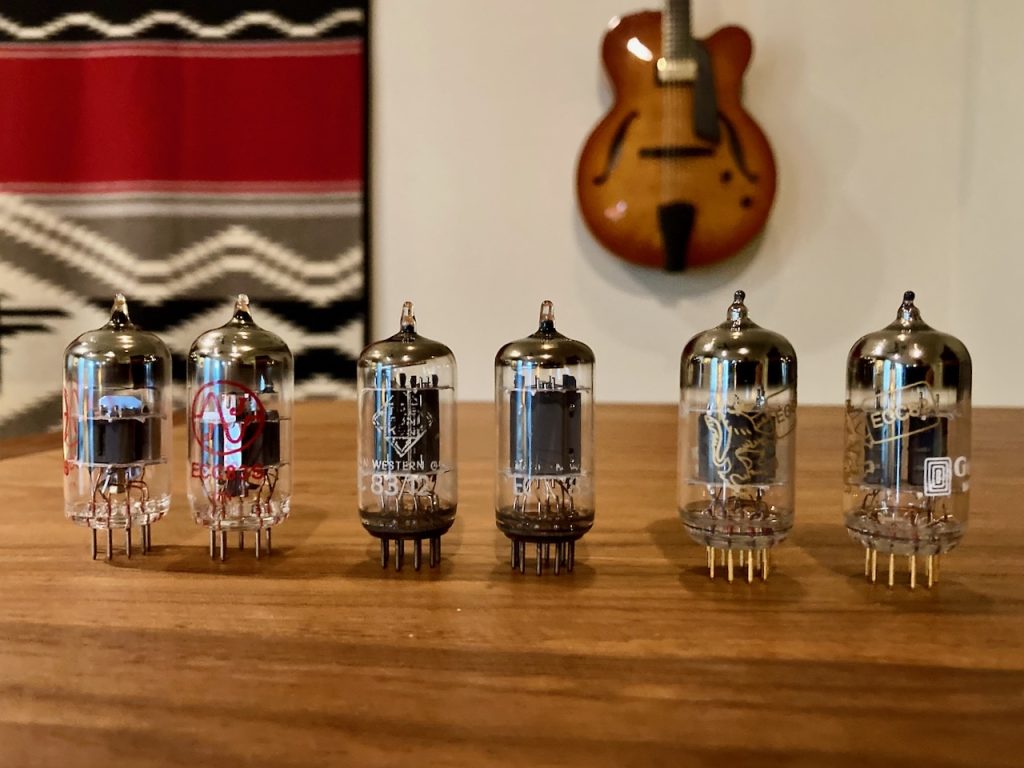
JJ ECC83S/12AX7 (left), Telefunken ECC83/12AX7 smooth plate (middle), Genelex (Russia) Gold Lion 12AU7 (right)
Well, I thought I'd start experimenting with a little 12AX7 / 12AU7 / 5751 (on order) input tube rolling in the 45 EVO for some entertainment.
I scrounged around my tube collection and found a new (?) pair of JJ ECC83S/12AX7s, and a well used pair of Telefunken ECC83/12AX7 smooth plates, stashed away, to compare to the Genelex Gold Lion 12AU7s.
I'm just getting started with the 12AX7s and 12AU7s I have on hand, but I've got a variety of NOS tube types ordered to try, and then to tell you about (coming to a theater near you soon).
I'll tell you what, it's really cool that Audio Note (UK) designed their CD 5.1x to have both a lower voltage output of 1.2V via RCA outs (middle center above), and a higher voltage output of 2.4V via XLR outs (upper right in the photo above), as it allows for optimum matching to various associated components, or in this case lower or higher gain input valves (more about that CD 5.1x feature HERE).
For example, the "turbo boost" 2.4V mode of the CD 5.1x was perfect for the low gain 12AU7 inputs in the 45 EVO, but it was too much for the 45 EVO with the high gain 12AX7 inputs.
With the additional gain offered by the 12AX7 inputs I utilized the lower voltage 1.2V RCA outputs of the Audio Note (UK) CD 5.1x for a much better match.
For this particular comparison I used Belden 8402 tinned-copper microphone cable interconnects terminated with 1) RCAs on both ends for the CD 5.1x's 1.2V outputs, and 2) XLRs on the source end and RCAs on the amp end for the CD 5.1x's 2.4V outputs.
I'll offer some more detailed comparisons in time, but just generally speaking for now, I found the Genelex Gold Lion 12AU7 inputs to have better tonality overall than either pairs of the 12AX7 inputs I tried, and just generally better performance in terms of being well balanced across the audio frequency spectrum.
The Genelex Gold Lion 12AU7 inputs sounded more tonally natural, a little smoother, and more well balanced top-to-bottom across the audio spectrum. They also offered a more expansive sense of space in the soundstage, an articulate and well balanced bass response, beautiful midrange tonality, and natural sounding high-frequencies (i.e. easy on the ears).
While they are new production, the Genelex Gold Lion 12AU7s are in a similar price range as the more expensive NOS tubes, at about $160 USD per pair at Upscale Audio, for example. They're worth it.
I preferred the Telefunken 12AX7s to the JJs, but the JJ 12AX7s are also nice sounding, particularly considering their affordable price point of about $40 USD per pair.
Figure you're going to pay quite a bit more for Telefunken 12AX7 smooth plates, at least $200 USD per pair, and on up, so the JJs are a bargain at typically less than one-fifth their price.
The 12AX7s (100 mu) are capable of much more potential volume as inputs in the 45 EVO compared to the 12AU7s (~20 mu).
The 12AX7s portray more vivid images on the soundstage, and play the music with more authority, but I didn't think they were as tonally natural sounding, and they tend to sound a bit 'rough' and electronic sounding compared to the smooth naturalness of the Gold Lion 12AU7s.
The biggest drawback of the 12AX7s in the 45 EVO is that the bass tends to be a little overblown, a little sloppy sounding, and not nearly so controlled and tight as I heard with the Gold Lion 12AU7s.
That bass trait might suit some loudspeakers better than others. If you have loudspeakers that aren't real strong in the bass, then the 12AX7s might be just the ticket to get a little more oomph out of them.
I also thought the 12AX7s sounded more distorted when pushed hard, where the 12AU7s sounded clean and natural, but that may just be because it was not possible to push the 12AU7s with their ~20-ish mu as hard as the 12AX7s with their 100 mu.
Using my earlier wine tasting analogy, the Gold Lion 12AU7s have a light flowing sound quality, and the 12AX7s are more intense and dramatic in their presentation. The 12AX7s sound a tiny bit dry, while the Gold Lion 12AU7s have a nice sense of liquidity about them. The Gold Lion 12AU7s sound a little more laid back and recessed, while the 12AX7s tend to sound more forceful and forward. The Gold Lion 12AU7s have a softer and more velvety sound quality, while the 12AX7s are a little more course and direct sounding.
It sounds like I'm bagging on the 12AX7s, but I'm really not. They actually sound really good in the 45 EVO, just not as good as the 12AU7s for my preferences.
Last night while I was listening to the Telefunken 12AX7 inputs they were amazing to hear on small group jazz albums. Only in comparison to the Gold Lion 12AU7s did my enthusiasm wane for them.
That's the beauty of tube rolling. You can try different vacuum tubes, and find ones that best match your personal tastes for your audio system voicing.
Ok, that's enough for now. As I spend more time listening to the various input tubes for the 45 EVO I'll have a little more to say. Hopefully the NOS inputs that I've ordered will be here before too long, and I can tell you my impressions of those.
Also, a big "Thanks!" to Jason Parmenter (Parmenter Sound) for piquing my curiosity for rolling tubes in the 45 EVO. Enjoy your new 45 EVO, Jason!
Oh, I almost forgot: I'll have more to say about the Duelund DCA10GA loudspeaker cables in the not too distant future as well, so stay tuned for those listening impressions.
As always, thanks for stopping by, and may the tone be with you this Holiday Season!








